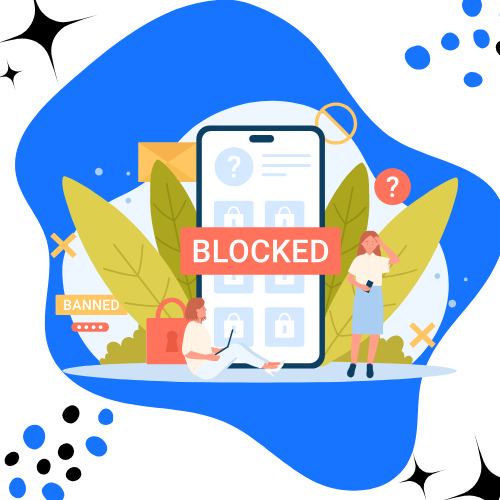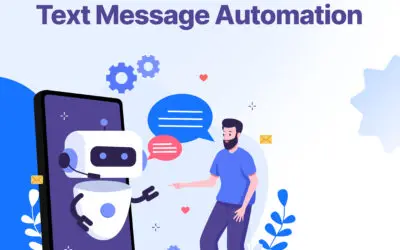What is 10DLC?
A2P 10DLC phone numbers, also known as 10-digit long code (10DLC) phone numbers, are instrumental for businesses operating in the United States. These unique phone numbers allow businesses to conveniently send Application-to-Person (A2P) type messages using conventional 10DLC phone numbers. It is important to note that A2P traffic is recognized as such by all carriers in the United States. You can indeed use your existing business numbers, including landline numbers, for local Application-to-Person (A2P) messaging through the 10 Digit Long Code (10DLC) system.
However, the significance of 10DLC goes beyond its functional purpose. These numbers are governed by regulatory bodies such as the Federal Communications Commission (FCC) and the Cellular Telecommunications Industry Association (CTIA). This regulatory oversight ensures that businesses comply with guidelines and regulations such as the Telephone Consumer Protection Act (TCPA) in the United States. By adhering to these regulations, businesses can maintain ethical messaging practices and protect consumers’ privacy.
10DLC numbers offer a multitude of benefits for businesses. They enable organizations to engage in effective customer communications, conduct impactful marketing campaigns, send transactional messages, provide appointment reminders, and deliver important notifications. The versatility of 10DLC opens up a wide range of messaging use cases, empowering businesses to connect meaningfully with their customers, clients, and prospects.
What sets 10DLC apart is its ability to facilitate two-way messaging. This means businesses can engage in interactive conversations with their audience, fostering better engagement and building stronger relationships. This interactive functionality adds a layer of personalization and responsiveness to business communications, enhancing the overall customer experience.
The main differences between 10DLC, short codes, long codes, and toll-free numbers lie in their capabilities and cost-effectiveness. Short codes are known for their ability to send a vast number of text messages rapidly, but the setup process can be extensive and costly. Long codes are essentially regular phone numbers used for individual messaging purposes. Toll-free numbers are usually best suited for customer service or sales support interactions. By contrast, 10DLC is a cost-effective option for mass marketing messages, offering a messaging rate ranging from five to fifteen messages per second. This isn’t to say these other types pale in comparison to 10DLC, as each of these options has its own set of advantages when considering factors such as usage, costs, and delivery rates.
How can businesses use 10DLC?
Businesses can leverage 10DLC (10-Digit Long Code) for various messaging purposes to improve their communication strategies. 10DLC enables businesses to engage in interactive conversations with their customers, clients, and prospects, which is highly valuable for building stronger relationships. Customer communications can be facilitated through 10DLC, allowing businesses to effectively address inquiries, provide support, and offer personalized assistance. Additionally, 10DLC can be used for marketing campaigns, enabling businesses to reach out to a broader audience and promote their products or services. Transactional messaging, such as sending payment confirmations or order updates, can also be efficiently handled using 10DLC. Moreover, appointment reminders and notifications can be easily sent to customers, ensuring they stay informed and organized. Ultimately, 10DLC offers businesses a versatile platform for a wide range of messaging use cases, enhancing communication effectiveness and enabling them to provide better customer experiences.
How do I register my 10DLC with The Campaign Registry?
Registering a 10DLC (10 Digit Long Code) with The Campaign Registry serves a crucial purpose in ensuring compliance and accountability for businesses that engage in text messaging campaigns. The registry, established by major mobile carriers such as AT&T and T-Mobile, acts as a centralized database that keeps track of the brands using 10DLCs as well as the specific use cases they employ.
Businesses can register a local number for 10DLC by undergoing a streamlined registration process. Initially, they will need to provide essential information about their business, including the kind of text messages they plan to send. This process is designed to be prompt and can typically be completed in as little as one day, which is faster than many alternative services. Registering a 10DLC number is crucial because it ensures that the business’s text messages are less likely to be flagged or blocked by carriers.
What happens after I submit the registration information?
Once you provide the registration information, we will verify the information in a process called vetting for compliance purposes.
What information do I need to provide for campaign registration?
During the A2P 10DLC registration process, it is crucial to provide detailed information about your campaign’s use case for the 10DLC. This includes specifics on how you intend to utilize the 10DLC, sample messages, and the methods you will employ to obtain customer opt-ins.
To successfully register a campaign for the 10DLC platform, it is imperative to furnish essential details concerning your business, brand, and use case. This encompasses information about each participating business and brand in the campaign, such as the business name, location, and business type (LLC, partnership, etc.).
In addition to these fundamental details, ensuring you have all the necessary information readily available is key to a seamless registration process. While explicit details on the exact nature of this information are not provided in this article, it underscores the significance of offering comprehensive insights into your business, brand, and use case.
What information do I need to provide for brand registration?
For brand registration, you need to provide information about your company, including details like size, address, and tax ID number.
During the registration process for their brand and campaign, businesses are required to provide specific information. To register their brand, businesses must share essential details such as company information including size, address, and tax ID number. Additionally, for campaign registration, brands need to submit comprehensive information about their use case, which includes describing how they intend to utilize the 10DLC (10-digit long code). This entails providing example messages and outlining their approach to collecting opt-ins from customers. Once all the necessary information is provided, Textline proceeds to submit it for approval. This approval process is referred to as vetting, where the registry carefully verifies the accuracy and legitimacy of the submitted information.
Why is it necessary to undergo 10DLC registration?
It is imperative to complete the A2P 10DLC registration process for both marketing and transactional texts. The registration process is mandatory regardless of the type of message you intend to send or the volume of texts you plan to distribute. Every A2P 10DLC SMS campaign must be registered with The Campaign Registry (TCR). Failure to undergo registration for both marketing and transactional texts would result in the non-compliance with industry standards and regulations governing A2P messaging.
How do I register my 10DLC with The Campaign Registry?
To register your 10DLC with The Campaign Registry, https://www.campaignregistry.com, you need to provide details about your brand and campaign. This includes information about your company such as size, address, and tax ID number for brand registration. For campaign registration, you need to submit information about your use case for the 10DLC, including how you will use it, example messages, and how you will collect opt-ins from customers.

Want to Learn More About our services? Connect with one of CCAI's SMS Marketing Experts Today!
What are the differences between 10DLC and shortcode numbers?
When considering using 10DLC (10 Digit Long Code) numbers compared to dedicated shortcodes for SMS and MMS messaging, it is essential to delve into the nuanced distinctions between the two options. One fundamental contrast lies in the structural makeup of these numbers: shortcodes typically consist of five or six digits, whereas 10DLC numbers adhere to the standard ten-digit long phone number format. This variation in number structure can impact memory retention and brand recognition, as shortcodes are often easier to remember and can be closely associated with a specific brand, unlike 10DLC numbers, which may not enjoy the same level of brand recognition due to their resemblance to regular phone numbers.
The approval process for acquiring a dedicated shortcode is characterized by its comprehensive and potentially costly nature. Regulatory bodies such as the Common Short Code Administration (CSCA) oversee and enforce stringent guidelines for shortcode usage, adding layers of complexity and time consumption to the approval process. Conversely, obtaining approval for 10DLC numbers is generally more streamlined and expeditious, offering a more accessible route for businesses seeking to implement SMS messaging solutions.
Cost considerations also play a pivotal role in the comparison between shortcodes and 10DLC numbers. Dedicated shortcodes often come with a heftier price tag, with monthly costs potentially soaring up to $1,000, while 10DLC numbers present a more cost-effective alternative. This cost disparity underscores the financial implications of choosing between the two options, especially for businesses that balance functionality with budgetary constraints.
Finally, volume caps and message throughput capabilities differ between shortcodes and 10DLC numbers. Shortcodes typically boast high message throughput and no volume restrictions once approved, making them ideal for scalability and large-scale messaging campaigns. Conversely, while 10DLC numbers support bulk messaging and high throughput as well, shortcodes are recognized for their superior message scalability and throughput capabilities.
What are the differences between 10DLC and toll-free numbers?
10DLC (10 Digit Long Code) and toll-free numbers share similar functions and use cases, but they differ in terms of pricing and the option of having a local area code.
The main distinction between 10DLC and toll-free numbers lies in their cost. Toll-free numbers are the more affordable option for SMS, as they do not require a registration fee or a monthly Campaign Registry compliance fee, which amounts to $15 per month. Additionally, there is no need to undergo a DCA vetting process with toll-free numbers. However, when it comes to the cost of SMS itself, both toll-free and 10DLC numbers have comparable pricing.
While toll-free numbers do not require registration with the Campaign Registry, they must still be registered with mobile carriers. The advantage here is that messaging can begin immediately, even while awaiting approval. Toll-free numbers are commonly used for customer support, answering inquiries, and other customer service-related applications.
On the other hand, 10DLC numbers must register with the Campaign Registry, and businesses using 10DLC messaging must undergo a vetting process before messaging can commence. This vetting ensures that businesses and their 10DLC use cases are validated and compliant with the required regulations. However, this does come with a small monthly fee to remain on the Campaign Registry.
Both toll-free numbers and 10DLC numbers support high-volume messaging and have the capability for two-way messaging, voice calls, and high message throughput. While toll-free numbers are often associated with customer support, it’s important to note that 10DLC numbers also excel in handling high volumes of text messages efficiently. Specifically, 10DLC phone numbers enable this by supporting a high volume of text messages with a messaging rate currently around five to fifteen messages a second, which is significantly higher than a regular long code.
Who should register for 10DLC?
Any business that intends to utilize A2P messaging services must register for a 10DLC number. As per the newly implemented regulations in early 2023, it is mandatory for companies to complete the registration process prior to sending any text messages. Regardless of the industry or size of the business, registering for a 10DLC number is required. This means that whether you own a small local shop or a large multinational corporation, you must undergo the approval process, which typically takes around two to three weeks.
We strongly advise clients to complete their registration as soon as possible after purchasing. Those who transmit more than 3,000 messages per day to the United States, or who use more than five long code numbers to communicate within the United States, must comply with these new rules as of March 1st, 2022.
What are the benefits of having 10DLC for a business?
Using a registered 10DLC (10-Digit Long Code) for your business texting needs brings several advantages:
1. Familiarity to recipients: By using a 10-digit phone number, your customers will recognize and be more familiar with your messaging. Since they interact with such numbers daily, open rates and engagement are likely higher. Additionally, you can choose an area code or text-enable your existing voice-only number, like a landline or VoIP number, for A2P (Application-to-Person) messaging. This familiarity further enhances customer engagement.
2. Improved deliverability and throughput: Registered 10DLC numbers are designed for high message throughput, ensuring fast and reliable delivery. With this enhanced capability, you can be confident that your messages will reach your intended recipients promptly and consistently.
3. Cost-effective solution: Compared to using short codes, 10DLC numbers are typically more accessible and cost-effective, making them a budget-friendly option for SMS and MMS messaging campaigns. This affordability allows businesses of varying sizes to leverage the benefits of business texting without incurring significant expenses.
For businesses employing 10DLC technology for SMS marketing, the costs are influenced by several factors including the chosen SMS service provider, the volume of messages sent, and the specific wireless carriers being used. For example, a typical pricing scenario might involve an initial registration charge of approximately $4, combined with a recurring monthly fee around $10. Additionally, fees charged by the wireless carriers will also apply, though these are generally passed on directly without any additional cost from the SMS service provider.
10DLC allows for transmitting MMS messages using local numbers, enhancing the perception of authenticity and reach. Nevertheless, opting for a short code is recommended for high-volume MMS messaging due to its efficiency and capability to handle larger quantities more effectively.
4. Leveraging existing voice numbers: An added advantage of 10DLC is the ability to text-enable your existing voice-only numbers, such as landlines, VoIP lines, or toll-free numbers. This feature is particularly beneficial if you already have a well-known business number that your customers are familiar with. By text-enabling these numbers, you can conveniently extend your messaging capabilities to reach your customers directly.
Businesses can effectively leverage their existing voice numbers for Application-to-Person (A2P) messaging by text-enabling them. This can be done with various numbers, such as landlines, Voice over Internet Protocol (VoIP), or toll-free numbers. Businesses can seamlessly communicate with their customers through text messages by text-enabling these numbers. This approach is particularly advantageous if a business already has a well-established voice number that customers are familiar with. It eliminates the need for customers to remember and use a separate phone number for texting, streamlining the communication process. Businesses can enhance customer convenience and engagement by utilizing their existing voice numbers for A2P messaging.
5. Scalable solution: Whether a small business or a large enterprise, 10DLC numbers offer scalability to accommodate messaging campaigns tailored to your specific business needs and goals. This means you can adapt your messaging strategy as your business grows and evolves, ensuring your communication efforts remain effective and impactful.
6. Building a contact list: Businesses can employ several effective strategies to gather phone numbers for group texting using 10DLC (10-digit long code). First, setting up a keyword that customers can text to a dedicated number is a simple way to opt in. Additionally, integrating a signup form on the company’s website allows visitors to easily enter their phone numbers to receive texts. Businesses can also leverage their existing customer databases by importing approved contact lists into their texting platform.
What are the limitations of using 10DLC?
Using 10DLC for your business comes with a few limitations that you should be aware of. These limitations include the following:
1. Verification and Activation Delays: One drawback of using 10DLC is that there may be delays in the verification and activation process. Regulators have implemented new vetting requirements for businesses using 10DLCs. This means that before you can start messaging on a 10DLC number, you must go through a registration and approval process, which can take a significant amount of time, typically two to three weeks.
2. Carrier Message Filtering and Blocking: Mobile carriers have implemented spam filtering measures to protect their customers, which can sometimes create challenges for businesses using 10DLC. Carriers may filter or block messages they consider objectionable or spam-like, without providing detailed information about why a message was flagged. This can lead to messages not reaching their intended recipients and may require additional effort to ensure successful message delivery.
3. International Limitations: 10DLC numbers are specific to the United States and may not be suitable for businesses with international messaging needs. If your business operates globally or requires sending messages to customers outside of the United States, you may need to consider alternative solutions or work with different messaging platforms that support international messaging capabilities.
4. Registration Fees: Although 10DLC is generally more cost-effective compared to using short codes, it is important to note that you will still have to pay a monthly campaign registration fee for your 10DLC. This fee is in addition to any other costs associated with your messaging campaign and should be factored into your budget when considering the use of 10DLC.
These limitations should be taken into account when deciding whether or not to use 10DLC for your business messaging needs. It is important to evaluate your specific requirements and weigh the benefits against these limitations to ensure the most suitable solution for your messaging strategy.
What are some use cases for 10DLC?
Businesses can leverage a registered 10DLC number in various ways to enhance their operations and communication. Here are several valuable use cases to consider:
1. Order Updates: Keep customers informed about their purchases by sharing order confirmations, expected delivery timelines, and other relevant updates.
2. Appointment Reminders: Send timely reminders to customers regarding upcoming appointments, ensuring they stay on schedule for medical visits, salon appointments, or any other time-sensitive engagements.
3. Billing Notifications: Notify customers about unpaid bills or upcoming payment due dates, simplifying the billing process and reducing the chances of missed payments.
4. Promotional Messages: Engage with customers and leads through SMS marketing, offering exclusive discounts, announcing product launches, or sending reminders about abandoned shopping carts, incentivizing customers to complete their purchases.
5. Real-time Alerts: Deliver critical information promptly, such as emergency alerts, service cancellations, flight delays, or any other time-sensitive updates that require immediate attention.
6. Customer Support: Enhance your customer support desk by utilizing 10DLC messaging. Engage in two-way conversations with customers to promptly resolve issues, answer questions, and provide seamless support.
7. Feedback Collection: Send surveys to customers via SMS, allowing them to provide valuable feedback about their experiences. The bi-directional communication capability of 10DLC makes it easy to have meaningful conversations and gather actionable insights.
8. Internal Communication: Utilize 10DLC messaging to streamline internal communication processes. Connect with employees in the field, send memos, or share important updates, ensuring efficient dissemination of information within the organization.
9. Sales Follow-up: Utilize your local 10DLC number to follow up with leads after they have expressed interest or requested additional information. Use it to share requested quotes or address any concerns, nurturing potential customers and increasing conversion rates.
By exploring these various use cases, businesses can leverage 10DLC to streamline operations, enhance customer engagement, and improve overall communication efficiency.
What are the requirements and limitations of using 10DLC for international messaging?
When it comes to international messaging, using 10DLC numbers has certain requirements and limitations. Firstly, it is essential to note that 10DLC numbers are specific to the United States and may not be available or suitable for businesses with international messaging needs. This means that if a company operates internationally and needs to send messages outside of the United States, 10DLC numbers may not be the ideal solution. It is crucial for businesses with international operations to explore alternative messaging options that are compatible with their global communication requirements. By doing so, they can ensure an effective and efficient messaging strategy that meets their international needs.
How can businesses use 10DLC for customer support, promotional messages, and other purposes?
Businesses can leverage a registered 10DLC number to enhance their customer support capabilities and engage with their audience in various ways. Here are several use cases to consider:
1. Customer Support: Utilize a 10DLC number to provide prompt resolution of customer issues and questions. Engage in text conversations to efficiently address and resolve concerns, ensuring customer satisfaction.
2. Promotional Messages: Send SMS marketing messages to customers and prospects, leveraging 10DLC. This can include sharing exclusive discounts, announcing product launches, reminding customers about abandoned carts, and keeping them informed about your latest offers.
3. Order Updates: Keep customers informed about the status of their orders using 10DLC messages. Share order confirmations, expected delivery timelines, and any relevant updates to enhance the customer experience.
4. Reminder Notifications: Send customers timely reminders about upcoming appointments, upcoming bill payments, hotel reservations, and more. Utilizing 10DLC ensures that these notifications are delivered promptly and effectively.
5. Real-time Alerts: Use 10DLC messaging to swiftly communicate vital information to your contacts. Send emergency alerts, last-minute service cancellations, flight delay notifications, or any other time-sensitive updates that your customers need to be aware of.
6. Feedback Requests: Gather valuable insights and feedback from customers by sending surveys via SMS using 10DLC. The two-way capabilities of 10DLC allow for seamless communication, making it easy to obtain actionable feedback and improve your products or services.
7. Internal Communication: Implement 10DLC messaging for effective communication with employees in the field. This can be used to relay important information, send memos, or provide updates to your team members in a quick and convenient manner.
8. Sales Follow-up: Utilize a local 10DLC number to follow up with leads after they request additional information. Whether providing further details or sharing a requested quote, 10DLC allows for personalized communication that enhances the customer journey and increases conversion rates.
By leveraging 10DLC for customer support, promotional messages, and other purposes, businesses can streamline their communication, improve customer engagement, and ultimately drive growth and success.
How can CloudContactAI help with 10DLC registration?
CloudContactAI is your reliable partner in navigating the intricate landscape of 10DLC registration. With our extensive expertise and strong industry relationships, we are well-equipped to swiftly register and gain approval for your numbers. By choosing CloudContactAI, we ensure that you select the appropriate number type and establish a seamless setup from the very beginning. With our help, you can confidently embark on a successful journey with a free 14-day trial, knowing that you are on the right track from the start. Trial users don’t even need to dedicate a credit card first before use.
CloudContactAI offers comprehensive assistance in navigating the intricate registration ecosystem for 10DLCs. Our team combines expertise and strong industry connections to facilitate a quick and seamless registration process for your numbers. With our services, you can rely on our guidance to select the most suitable number type and ensure correct setup right from the start. We understand the complexities involved in the registration process, and our goal is to provide you with the necessary support to effortlessly register and gain approval for your 10DLC numbers.
How can I earn commission for referring customers to CloudContactAI?
If you’re interested in earning commission for referring customers to CloudContactAI , you’re in luck! With our referral program, you can receive payment for every customer you bring in. It’s simple – for each new customer you refer, you’ll be rewarded with a commission. To find out more about how you can start earning with our referral program, please click on the “Learn More” button.
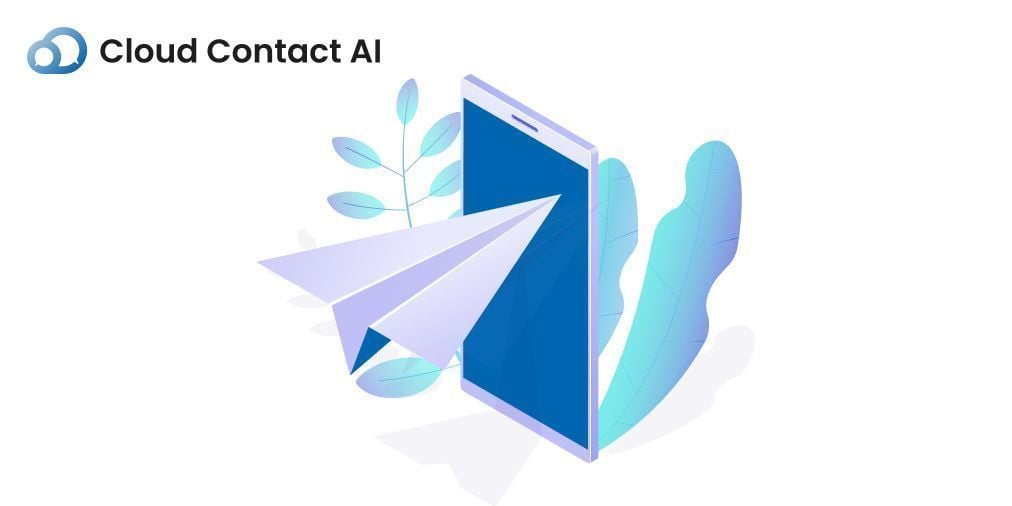
Take Your Business to the Next Level
CCAI’s SMS marketing strategies yield a 99% open rate. What have you got to lose?

How to Text from a Computer
From utilizing online texting platforms like CloudContactAI to harnessing the power of browser extensions, integrated communication suites, and voice-to-text transcription services, we’ll cover a wide range of methods to suit your preferences and needs. Whether you’re an Apple user looking to send messages seamlessly with Messages on Mac or an Android enthusiast exploring Messages by Google, there’s a solution available to suit every device and communication style.

Smartphone History: A Timeline
Delve into the origins of the first smartphone and discover the pivotal moments that shaped the evolution of this revolutionary device. From the groundbreaking IBM Simon to the game-changing debut of the iPhone, witness how smartphones have redefined the way we communicate, work, and play. With a rich blend of historical insights and forward-looking speculation, this comprehensive exploration promises to captivate and inspire anyone with a curiosity for the transformative power of innovation.
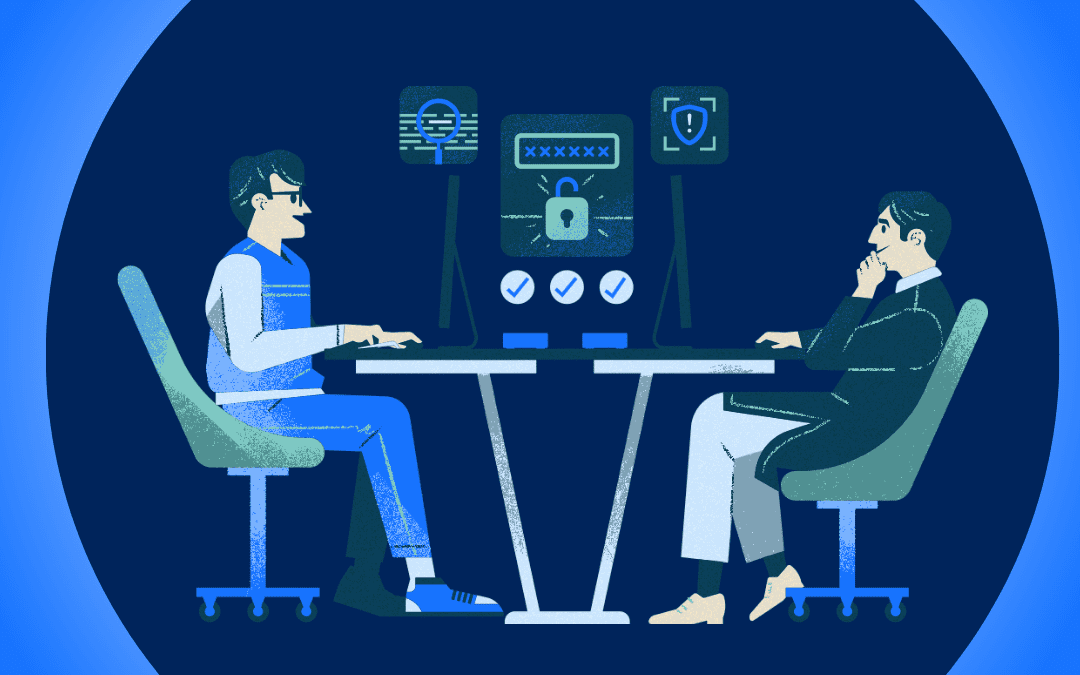
Navigating the Ethical Landscape: Generative AI in Business Communications
Dive into the ethical considerations surrounding the integration of generative AI in corporate communications. This article delves into critical issues such as bias, transparency, and the responsible use of AI, providing valuable insights into cultivating trust and accountability within the dynamic realm of AI-driven interactions.

Generative AI and Adaptive Learning: Transforming Training and Onboarding Programs
Discover how Generative Artificial Intelligence (AI) is reshaping employee training and onboarding processes. Explore the applications of adaptive content delivery, personalized learning paths, and real-time feedback, creating a dynamic and engaging learning environment for every employee.

Future-Proofing Business Communication: A Guide to Integrating Generative AI
Discover the Future: Integrating Generative AI into Business Communication Systems. Explore practical insights and tips on seamlessly incorporating generative AI into your communication strategies. Enhance customer engagement, optimize internal processes, and stay ahead in the digital landscape. Learn about CloudContactAI’s innovative generative AI email solution, a game-changer for crafting personalized and compelling content.
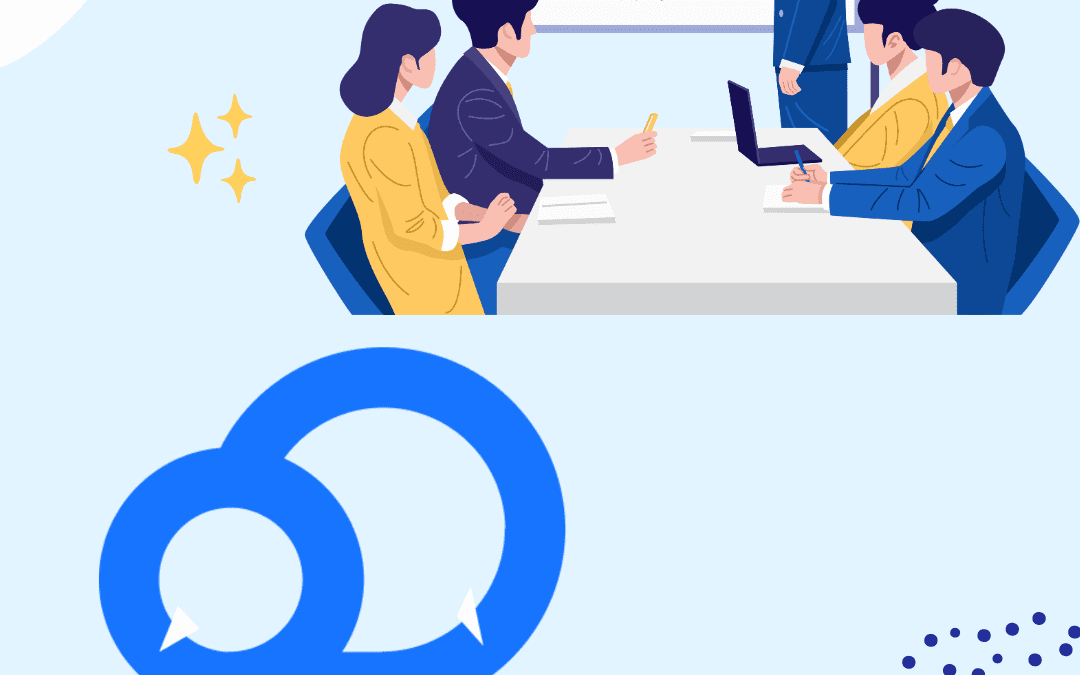
Collaborative Content Creation: Generative AI in Team Communication
Explore insights and tips for efficient content creation, brainstorming, and ideation. Discover CloudContactAI’s cutting-edge Generative AI Email Solution, enhancing team communication with personalized content. Elevate collaboration with real-time tools, customizable workflows, version control, and insightful feedback loops. Propel your team into a new era of innovation and productivity by embracing the transformative power of Generative AI in collaboration.
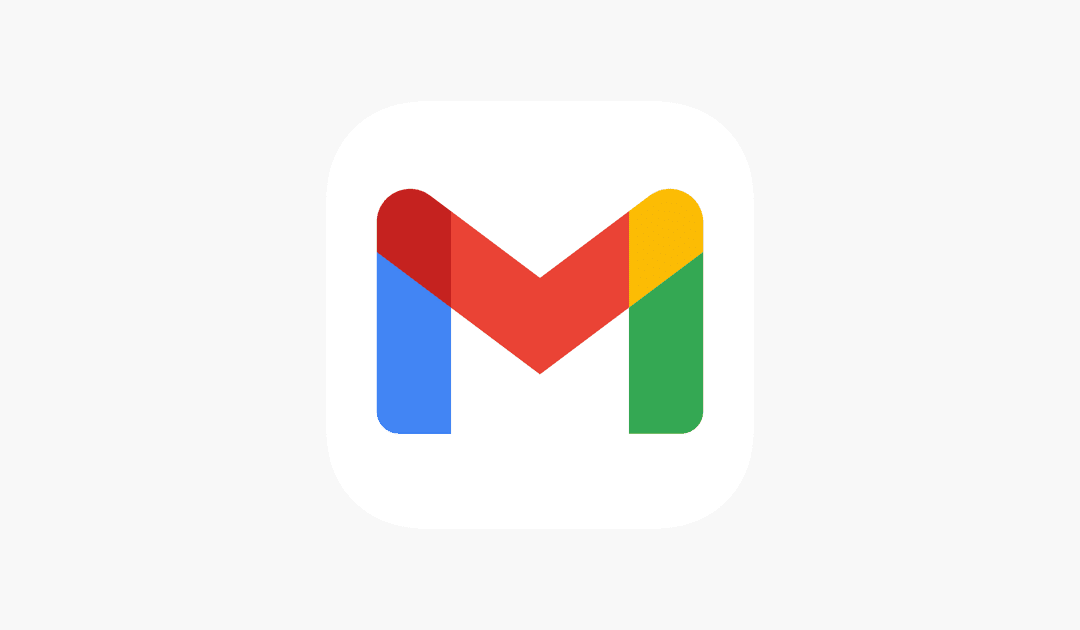
GMail and Yahoo! Mail New Email Sender Requirements 2024
New requirements from GMail and Yahoo! Mail mean that you must practice email authentication through DNS or your marketing emails will end up in Spam!
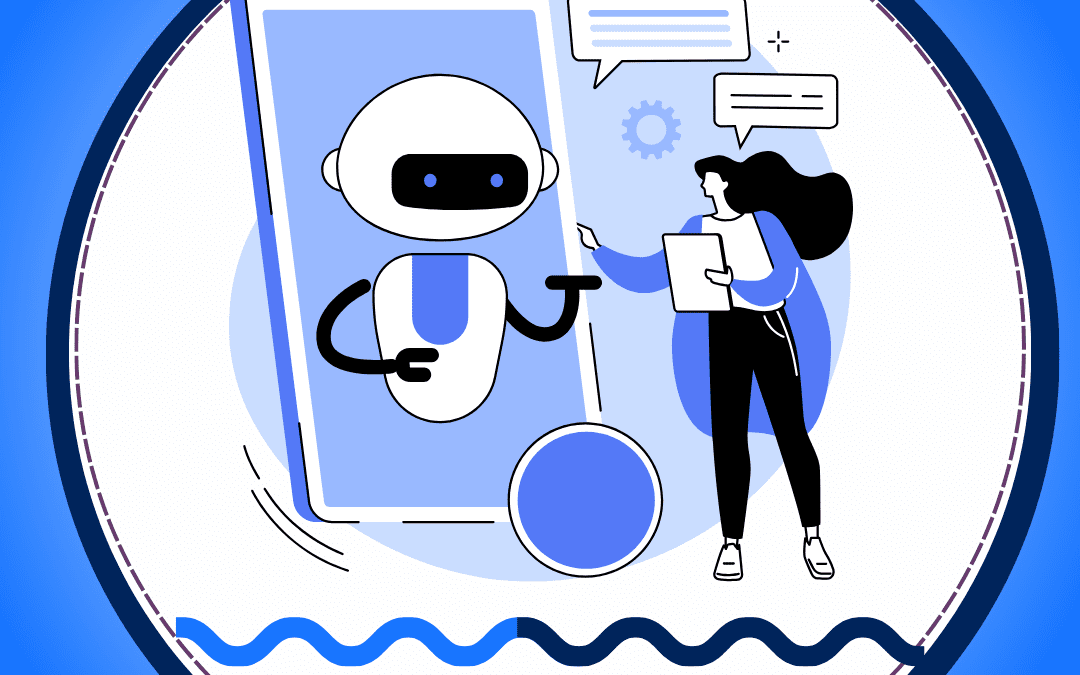
Generative AI and Cybersecurity: Safeguarding Business Communications
Explore how generative artificial intelligence (AI) is revolutionizing cybersecurity in business communication platforms. This comprehensive blog delves into the proactive role of generative AI in identifying and mitigating security threats in real-time. Discover how CloudContactAI, with its advanced generative AI email capabilities, safeguards organizations from phishing attempts and ensures the privacy of sensitive information.
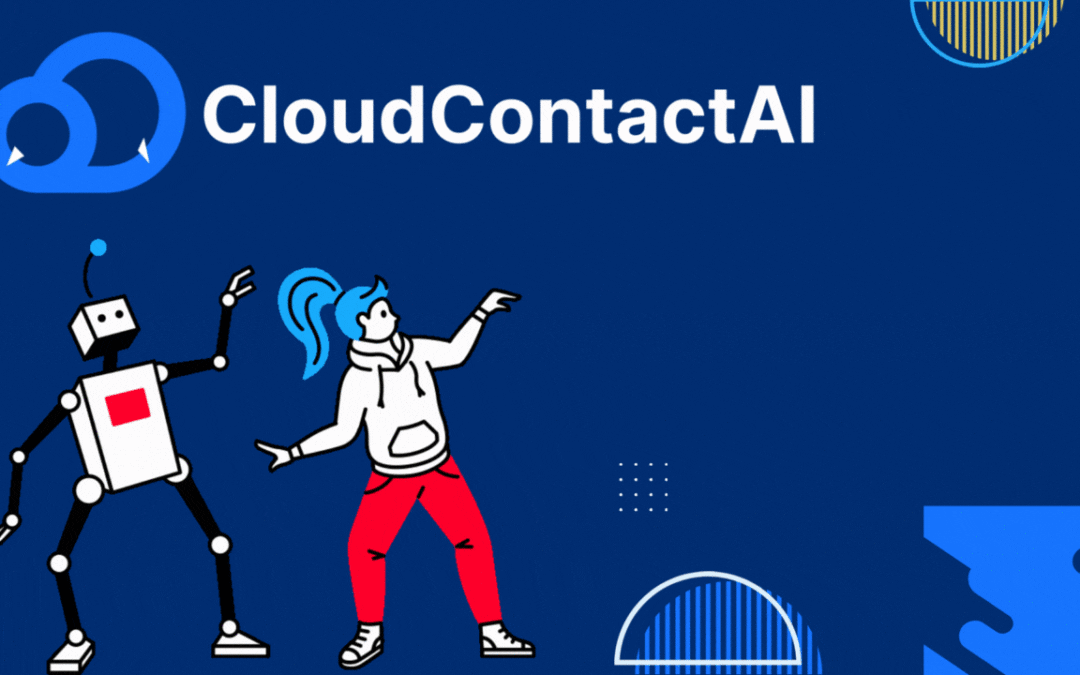
The Synergy of Generative AI and Emotional Intelligence
The integration of emotional intelligence into generative AI systems marks a significant leap forward in tech. As communication technologies advance, there is a growing need for AI to not only comprehend the words we use but also the emotions behind them.

